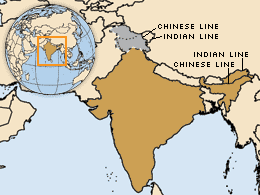Disease burden analysis
Information box
HIV and influenza vaccination of pregnant women
Evidence from South Africa indicates that people living with HIV infection have a substantially higher mortality from influenza [11]. Moreover, annual seasonal influenza mortality rates for HIV-positive and HIV-negative pregnant women in a study in South Africa were 74.9 deaths per 100 000 person-years compared to 1.5 deaths per 100 000 person-years respectively [12]. Overall, the South Africa study found that pregnant women were 2.8 times (all-cause HIV-adjusted and age-standardized RR, 2.8; 95% confidence interval [CI], 1.7–3.9) more likely to die from influenza than non-pregnant women [12]. However, those who seek outpatient care, or who are hospitalized, or who die pose only a fraction of those suffering from illnesses associated with influenza. Thus only a small proportion of all influenza cases are actually reported.
Influenza viruses are responsible for substantial morbidity and mortality in high-, middle- and low-income countries. These viruses typically cause acute, systemic, self-limiting illness that resolves in 7–10 days but that may also lead to serious outcomes (e.g. acute lower respiratory infections, or ALRI, in young children) [8], and including death and increased risk of hospitalization of pregnant women. Most data on the influenza disease burden come from high-income countries with well-established surveillance systems. Studies among pregnant women in high-income settings show higher influenza-associated hospitalization rates compared to non-pregnant women. The risk of influenza-associated complications in pregnancy increases with gestation. Pregnant women with underlying medical conditions such as asthma, diabetes and obesity have a higher influenza-associated morbidity compared to pregnant women without such underlying conditions [1, 9, 10]. Also, other illnesses that are prevalent in low-resource settings may additionally increase the impact of influenza disease.
This “tip of the iceberg” phenomenon is common to many illnesses (e.g. diarrhoeal diseases) and is increased in many settings by the lack of reliable point-of-care diagnostic testing, limited access to care facilities and suboptimal reporting. Strengthening disease surveillance, enhancing diagnostic testing capacity for influenza and reinforcing surveillance should be considered during the decision-making and planning processes for maternal influenza vaccine introduction in order to better estimate the burden of disease and its economic consequences (Toolbox A). Countries without robust surveillance can consider estimating the proportion of maternal mortality due to influenza like illness or confirmed influenza.
Use of disease burden analysis in Maharashtra, India
 Maharashtra is one of the most developed and populous states of India with a population of over 110 million. Disease burden studies carried out in a rural population in Maharashtra indicate that the annual rate of hospitalizations due to influenza was 46.8 per 10 000 persons during the 2009 A(H1N1) pandemic and 40.5 per 10 000 during the post-pandemic period. During the peak of acute respiratory illnesses (i.e. during the monsoon period), 20% of all hospital admissions were found to be influenza-positive.
Maharashtra is one of the most developed and populous states of India with a population of over 110 million. Disease burden studies carried out in a rural population in Maharashtra indicate that the annual rate of hospitalizations due to influenza was 46.8 per 10 000 persons during the 2009 A(H1N1) pandemic and 40.5 per 10 000 during the post-pandemic period. During the peak of acute respiratory illnesses (i.e. during the monsoon period), 20% of all hospital admissions were found to be influenza-positive.
In March 2015, more than 200 influenza-associated deaths, of which 22 were pregnant women, were reported, causing public concern and media attention. In April 2015, a Maharashtra Communicable Disease Prevention and Control Technical Committee was set up by Government of Maharashtra to provide guidance and recommendations on the prevention and control of various communicable diseases, including influenza. The committee included members from the National Center for Disease Control, the National Institute of Virology, the Indian Medical Association, the State Family Welfare Bureau and the Department of Medical Education and Research. A retrospective analysis of data conducted by the committee indicated that, between 2009 and 2015, pregnant women accounted for 9.84% (214 out of 2175) of all influenza-related deaths. The great majority of deaths (97%) among pregnant women occurred during the second and third trimesters. On the basis of these data, and since maternal immunization could lead to protection of children against influenza in the first months of life, the State of Maharashtra accepted the committee’s recommendations and decided to introduce free voluntary influenza vaccination for second- and third-trimester pregnant mothers and other risk groups.
The state approved funds for procurement of influenza vaccines and for an Information, Education and Communication (IEC) campaign. The campaign was inaugurated by Maharashtra’s Minister of Health in six selected vaccination centres in the state in July 2015. Vaccination centres were established in all major maternity homes, and separate desks for influenza vaccination were created in antenatal care clinics.
Sources: Dr Pradeep Awate, Directorate of Health Services, Government of Maharashtra, India; Dr Mandeep Chadha, National Institute of Virology, Indian Council of Medical Research; Dr Lalit Kant, Public Health Foundation of India; Dr Subhash Salunke, Public Health Foundation of India.
WHO’s Manual for estimating disease burden associated with seasonal influenza [13] provides a comprehensive assessment of disease burden associated with the respiratory manifestations of influenza – i.e. influenza-like illness (ILI), severe acute respiratory infection (SARI) and hospitalized severe acute lower respiratory illness (ALRI). The manual can help countries obtain a conservative estimate, based on a proportion of the overall disease burden associated with influenza, using existing data sources and taking into account their limitations. When introducing maternal influenza vaccination, the manual can serve to estimate the influenza disease burden and can help identify areas where sentinel influenza surveillance can be established or improved.
